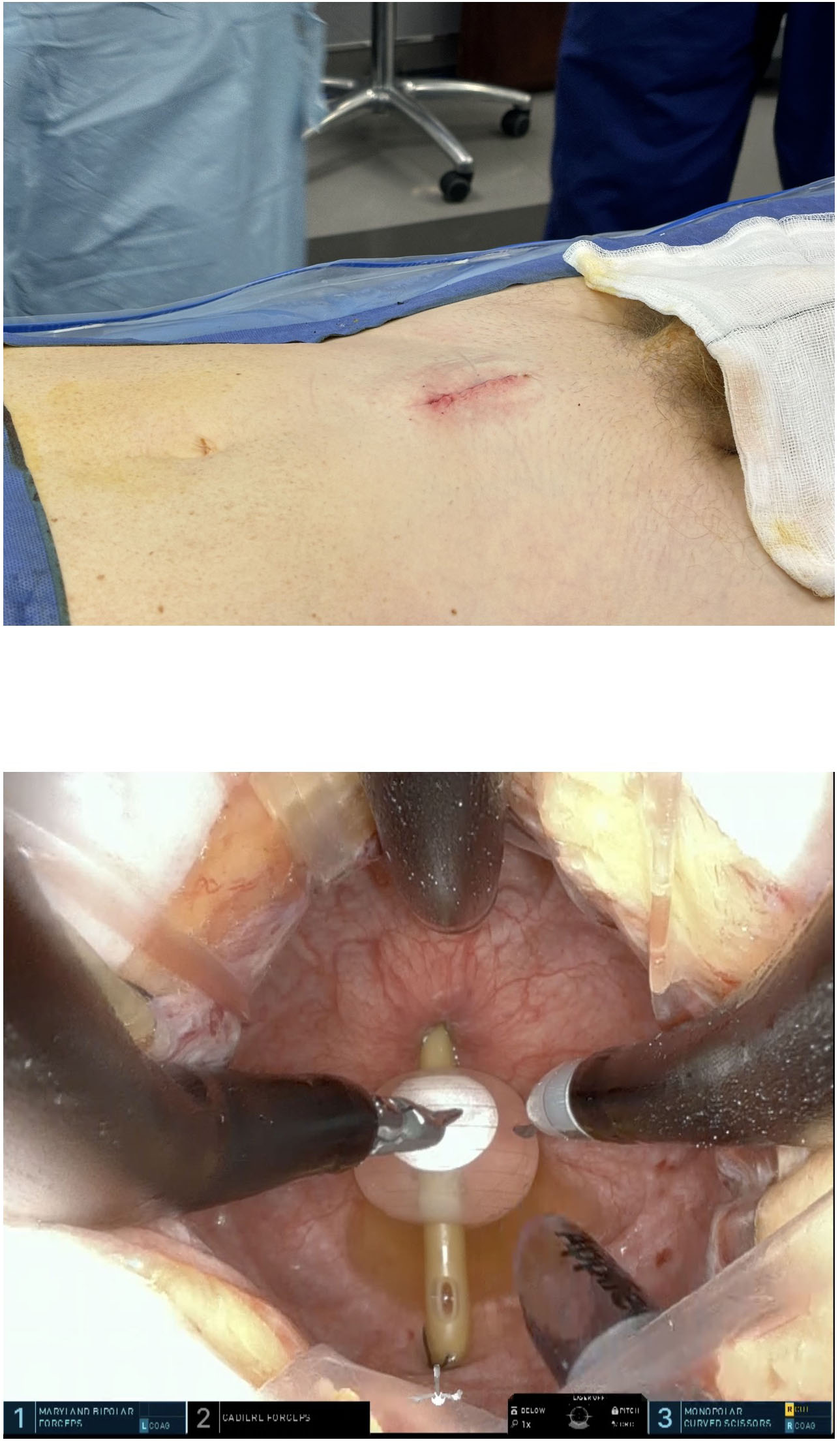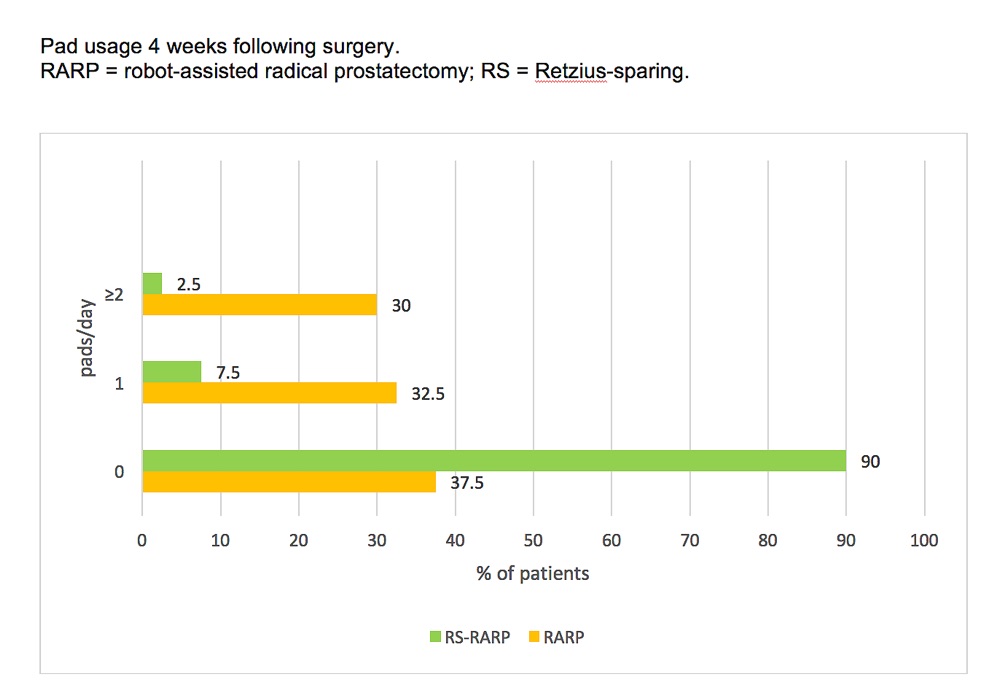PROSTATE SURGERY
The da Vinci Single Port Robot: Advanced Prostate Surgery
What is single port robotic prostatectomy?
A single port robotic prostatectomy is a minimally invasive surgical procedure that uses the latest robotic-assisted technology to treat prostate cancer. Unlike traditional multiport robotic surgery, the da Vinci SP robot allows all robotic instruments and the assistant port to be inserted through a single small incision below the belly button. This technique, sometimes called a single port radical prostatectomy, offers safer surgical precision (particularly for patients who have had prior abdominal surgery) while also promoting faster recovery.

Benefits of single port prostatectomy
The da Vinci single port approach offers significant advantages over conventional methods:
Reduced risk of complications:
Enhanced precision and stability with the da Vinci SP platform reduce the chance of bleeding, infection, and other surgical complications.
Faster recovery
time:
Minimally invasive techniques with high-definition 3D cameras mean the body heals more quickly.
High success rate in cancer removal:
The control delivered by the da Vinci SP robot enables accurate removal of cancerous tissue.
Preservation of sexual
function:
Robotic precision helps protect delicate nerves that control potency and sexual health.
Minimal scarring:
A single small incision results in less visible scarring and reduced discomfort.
Improved urinary continence:
Advanced robotic control supports preservation of structures around the bladder, promoting faster recovery of continence.
The evolution of robotic prostatectomy
da Vinci ‘multiport’ robotic surgery
The journey toward minimally invasive prostate cancer surgery began with laparoscopic techniques in the 2000s, where surgeons manually controlled instruments through small incisions. By the 2010s, Intuitive Surgical’s da Vinci robot revolutionised the field with multiport robotic-assisted surgery, improving cancer control and the preservation of urinary and sexual function.
Since its introduction in 2000, the da Vinci surgical system has been used in over 11 million robotic surgeries worldwide. The technology evolved from the original 3-arm standard model to the 4-arm S and Si models, and now to the advanced Xi and 5 systems.

The da Vinci Single Port
The da Vinci Single Port (SP) system represents the next leap forward. While conventional multiport robotic surgery requires up to six abdominal incisions, the da Vinci SP robot introduces all four robotic arms and an assistant port through a single incision. This innovation enhances surgeon control, visibility, and precision while minimising surgical trauma.
Key features of the Intuitive Surgical da Vinci SP platform:
- Four flexible robotic arms with two articulating joints each.
- High-definition 3D telescopic camera providing enhanced surgical visibility.
- Interchangeable instruments offering a wide range of movements.
- A rotating central column that maximises access and control.
Awarded European medical device certification in December 2023, the da Vinci SP system was adopted by our centre in April 2024, making us one of the first in Europe to integrate this platform.

Patient Recovery and Aftercare
Recovery from a single port radical prostatectomy is typically faster than with open or multiport surgery. Most patients can expect:
- A shorter hospital stay (often just 1–2 days).
- Quicker return to daily activities, with less post-operative discomfort.
- Removal of the catheter within one to two weeks.
- Gradual improvement in continence and sexual function, supported by the precision of the da Vinci SP robot.
- Our dedicated care team provides ongoing support, ensuring you have clear guidance on activity, medication, and follow-up appointments.

What does the SP platform add to Retzius-sparing robotic prostatectomy?
The da Vinci SP platform enhances Retzius-sparing techniques, delivering optimal outcomes in cancer control, continence, and potency:
1. Retzius-sparing technique – Provides up to 3x better early continence than conventional robotic prostatectomy.
2. Real-time frozen-section analysis – Enables the surgeon to optimise both cancer control and functional outcomes by preserving more nerves, eliminating the need to choose between the two – an issue that arises when this information isn’t available during surgery.
3. Arista haemostatic powder – Reduces bleeding-related complications and improves post-operative potency, with a 78.1% potency rate in non-diabetic men under 70.
4. Transvesical SP approach – Enables surgery through the bladder, reducing bowel disturbance and offering particular benefits to patients with previous abdominal surgery.
Recent studies of over 400 cases show that 90% of men undergoing Retzius-sparing single port robotic prostatectomy regain continence immediately after catheter removal, while also experiencing improved potency — with no compromise in cancer control.

Urinary continence outcome for Retzius-sparing prostatectomy

Frequently Asked Questions
Is the da Vinci SP robot safe?
Yes. The da Vinci SP has been rigorously tested, approved, and awarded European medical certification in 2023.
How is single port different from multiport robotic surgery?
The single port robotic prostatectomy uses one incision instead of several, which reduces pain, improves cosmetic results, and may accelerate recovery.
Will I regain urinary control after surgery?
qMost patients experience faster recovery of continence compared with traditional approaches, particularly when the Retzius-sparing technique is used.
How long will I be in hospital?
Most men are discharged within 24–48 hours, although recovery varies by individual

